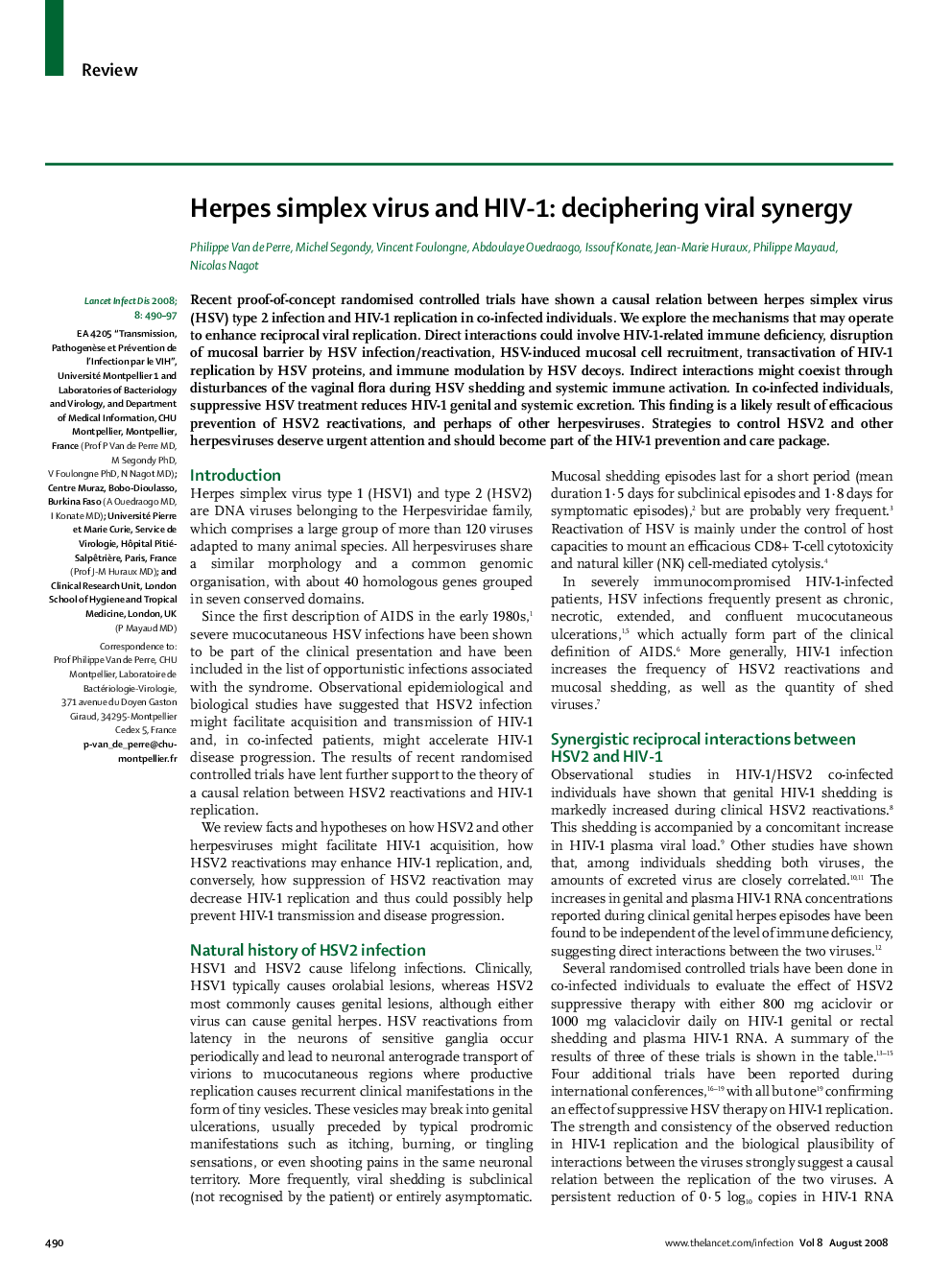| Article ID | Journal | Published Year | Pages | File Type |
|---|---|---|---|---|
| 3411205 | The Lancet Infectious Diseases | 2008 | 8 Pages |
SummaryRecent proof-of-concept randomised controlled trials have shown a causal relation between herpes simplex virus (HSV) type 2 infection and HIV-1 replication in co-infected individuals. We explore the mechanisms that may operate to enhance reciprocal viral replication. Direct interactions could involve HIV-1-related immune deficiency, disruption of mucosal barrier by HSV infection/reactivation, HSV-induced mucosal cell recruitment, transactivation of HIV-1 replication by HSV proteins, and immune modulation by HSV decoys. Indirect interactions might coexist through disturbances of the vaginal flora during HSV shedding and systemic immune activation. In co-infected individuals, suppressive HSV treatment reduces HIV-1 genital and systemic excretion. This finding is a likely result of efficacious prevention of HSV2 reactivations, and perhaps of other herpesviruses. Strategies to control HSV2 and other herpesviruses deserve urgent attention and should become part of the HIV-1 prevention and care package.
